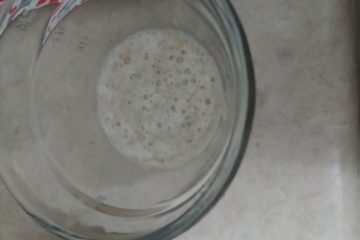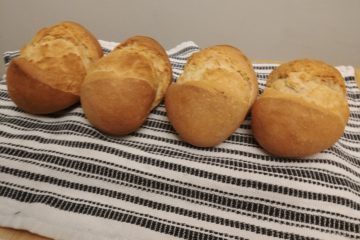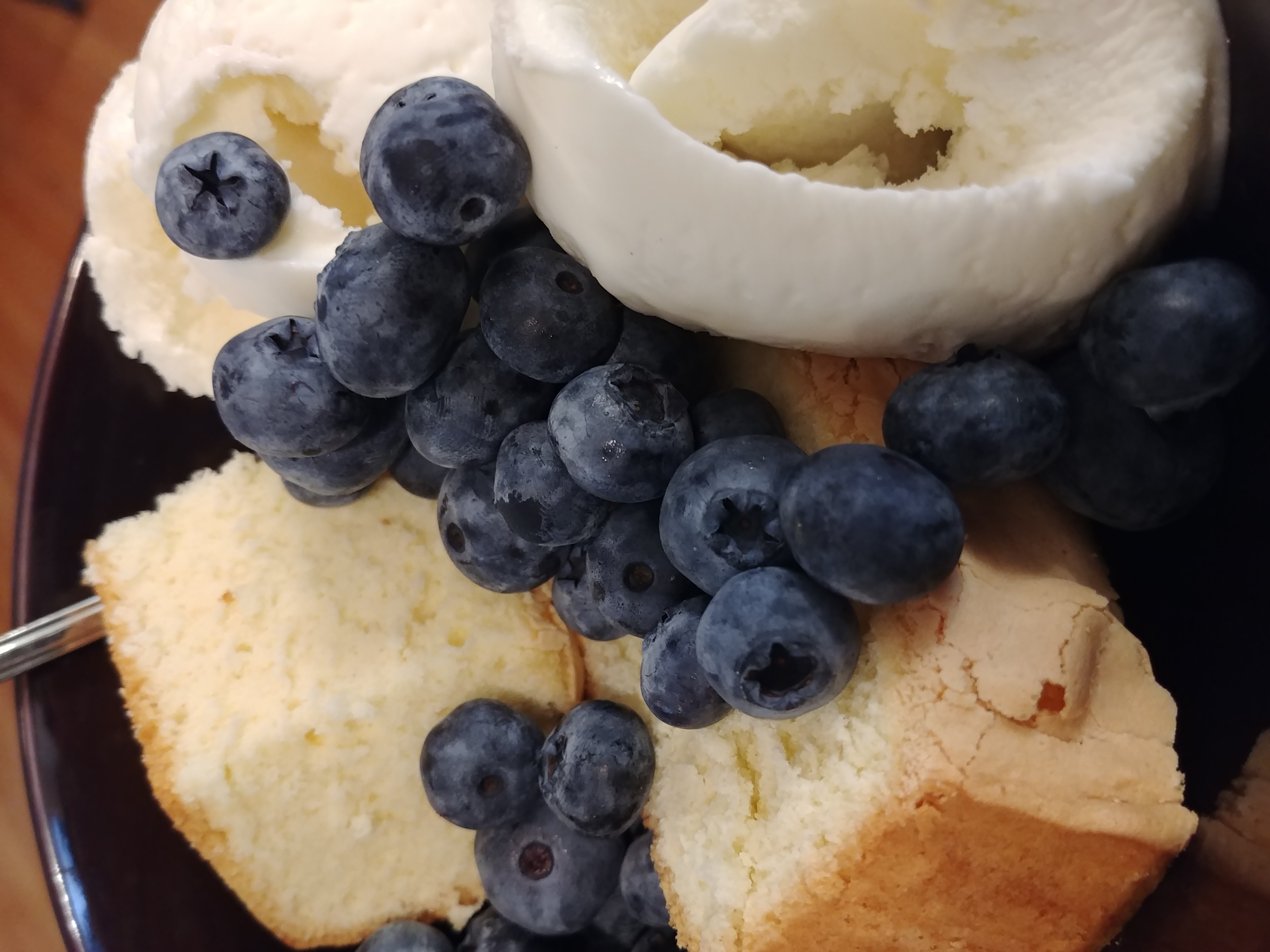Here are some collected comments and notes on the dishes which people made for our Culinary Night last week:
Caterina &tc.:
“Tarim Basin flatbread (gluten free adaptation). Based on archaeological finds in east central Asia dating to the first millennium CE.”
Information on Caterina &tc.’s Tarim Basin Flatbread can be found on her blog!
Asa:
“My recipe is a Sephardic Jewish recipe for lamb meat balls. Sephardic Jews arrived in the Ottoman Empire in 1492. They came from Spain during the Spanish Inquisition when King Ferdinand of Aragon and Queen Isabel of Castille decided to make a united Catholic Spain. The King and Queen ordered all Jews and Muslims to either convert or leave. About 200,000 Jews were exiled and came to the Ottoman Empire, settling mainly in the Aegean region, Istanbul, Thrace and the Balkans.
The recipe consists of ground lamb, shredded onion, minced garlic, fresh mint, cumin and salt. Portions of each are to taste with 1lbs of meat yielding one dozen meat balls.
The accompaniment was a yogurt sauce made with yogurt, salt, lemon and tahini which I seasoned to taste. Exact portions are not quite known.”
Sorcha and Arnaut:
“I made Tangy Sumac Chicken and Sweet Tooth Rice and Yogurt. They are both medieval Arab Recipes from Scheherazade’s Feasts: A Compilation of Recipes from the Medieval Arab world. I have not been able to find a specific date for the recipes.”
Caiaphas:
“Qahwa Mazbut – coffee from the farther eastern reaches of the middle east land such as Persia (modern Iraq) made in three styles, murra (bitter) which is considered by the coffee elite in that area of the world as “proper” and contains no sugar, sukkar qalil (little sugar), and mazbut (just right) is made with the most sugar. It’s primarily coffee flavoured with cardamom and sugar. Preparation also calls for boiling the coffee for about 1 minute three times.
Khawa (Qahwa) – originated on the Sinai Peninsula, specifically Yemen which some people claim to be where coffee originated. This version strictly forbids the use of sugar and is meant to be brewed dark. It’s flavored with cardamom and cloves. Preparation is done in only one long boil as opposed to several boils like Qahwa Mazbut.”
Thorvald:
“Persian lamb. I wanted to do lamb since it had been mentioned at Harvest Feast, and I had some in the freezer. I searched for Persian lamb on Google and got a lot of stews. I didn’t want to do a stew, so I added a not-stew instruction. Still nothing obvious. I added a period date range, and got nothing. So I picked a modern recipe labelled as Persian lamb, though whether it actually is truly Persian I have no idea. The ingredients were all period and available in Persia, so I went with that.
Lamb (a rack, cut into chops)
Marinade (I did about 20 hours, presumably didn’t need that long) with quantities that felt right of: Cardamom (green, crushed in mortar), true cinnamon, coriander, rosemary (crushed in mortar), garlic powder, onion flakes, orange zest, olive oil, lemon juice, celery powder, thyme, pepper, salt.
The garlic powder and onion flakes were because I didn’t happen to have fresh garlic or onion on hand. The online recipe called for lemon zest, so I used lemon juice plus orange zest. With extra lemon juice to hydrate the onion flakes.
There are more spices in my marinade than in the online recipe’s list. Because.
Grilled in oven for about 5 mins a side, which was too long.
Served cold as specified in the online recipe, garnished with fresh basil from my garden, and fresh cilantro.”
Tomas:
Information on Tomas’s sugar paste can be found on his blog!
Alice:
“I made Zirbaj, a Persian dish which is mentioned in David Waines’ “In a Caliph’s Kitchen,” which is a pretty popular collection of translated Medieval Islamic recipes. It is originally printed in al-Warraq, which is from the 10th century. Waines mentions that the sweet and sour flavours were a common feature of Persian dishes and still continue around the world today.
A lady called Anahita from Ansteorra posted her own redactions and comments on these recipes in a conversation from 2002, which can now be found here.
The recipe: “Take a fine quality chicken, joint it and clean it and place it in a clean pot. Then pour over one half ratl of fresh water and one half uqiya of a good quality oil, some white of onion, and
boil together. When boiled, pour in white vinegar, a half ratl and two uqiya of white sugar, and one uqiya peeled almonds, and one uqiya rose water. Add spices, pepper, cinnamon and ginger tied up in a fine cloth so that they do not alter the dish’s colour. Place on the fire a little allowing it to thicken.”
My modernized redaction:
4 chicken legs with skin and back on
Olive oil
The whites of a bunch of green onions, chopped
1.5 cups white wine vinegar
1/2-3/4 cup honey (or caster sugar, I like the taste of honey though. Add it to taste.)
3 T rose water
1/2 cup flaked almonds
1 T mixed spices (pepper, cinnamon, ginger)
1 small handful of parsley or leftover onion greens
1 T corn starch (or similar thickening agent)
Brown your chicken in the bottom of a large saucepan, then add water to cover and dump in all other ingredients except the parsley. Boil for at least 40 minutes, until the chicken pulls away easily and is fully cooked.
Remove the chicken from the cooking broth and put it in a large bowl to cool down a little.
Strain solids from liquids and discard about 3/4 of the liquid, then replace the solids and add your corn starch (don’t forget to pre-mix with a little water in a cup or small bowl.) Simmer the liquid on low and stir it while it thickens.
Meanwhile, remove the skin from the chicken legs and discard. Remove the meat from the bones as much as possible, then discard the bones and other inedible matter. Shred the remaining chicken meat and place in a serving dish. Pour a small amount of the thickened liquid on to the chicken and mix through until well-coated, then strain the solids again and mix them with the shredded chicken, removing any unappetizing bits of skin or gristle as needed. Garnish with chopped onion greens or parsley for freshness and color.
Realistically, you could make this dish a lot more meat-efficient by using chicken thighs, which is nice and fatty and I think will work just as well without having to mess around with bones and skin. Try it sometime!”



0 Comments